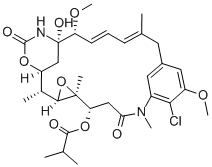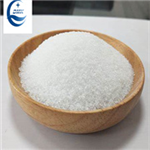Description
Ansamitocin P-3 is a microtubule depolymerizing agent that can be isolated from culture broths of certain Gram-positive bacteria. It binds tubulin (K
d = 1.3 μM), depolymerizes microtubules in both interphase and mitosis, and perturbs chromosome segregation. Ansamitocin P-3 also activates the spindle checkpoint surveillance proteins Mad2 and BubR1, blocking cell cycling during mitosis. It inhibits the growth of cancer cells in culture and significantly suppresses the growth of several cancer tumors in mice, prolonging survival time.
Uses
Ansamitocin P-3’ is a metabolite of Ansamitocin which is a new maytansinoid antitumor antibiotic.
References
1) Li et al (1992) Binding selectivity of rhizoxin, phomopsin A, vinblastine and ansamitocin P-3 to fungal tubulins: differential interactions of thes antimitotic agents with brain and fungal tubulins; Biochem. Biophys. Res. Commun., 187 722
2) Venghateri et al. (2013) Ansamitocin P3 Depolymerizes Microtubules and Induces Apoptosis by Binding Tubulin at the Vinblastine Site; PLoS ONE 8 e75182
3) Suwanborirux et al. (1990) Ansamitocin P-3, a maytansinoid, from claopodium crispifolium and anomodo attenuates or associated actinomycetes; Experientia, 46 117
4) Ootsu et al. (1980) Effects of new antimitotic antibiotics, ansamitocins, on the growth of murine tumors in vivo and on the assembly of microtubules in vitro; Cancer Res. 40 1707




